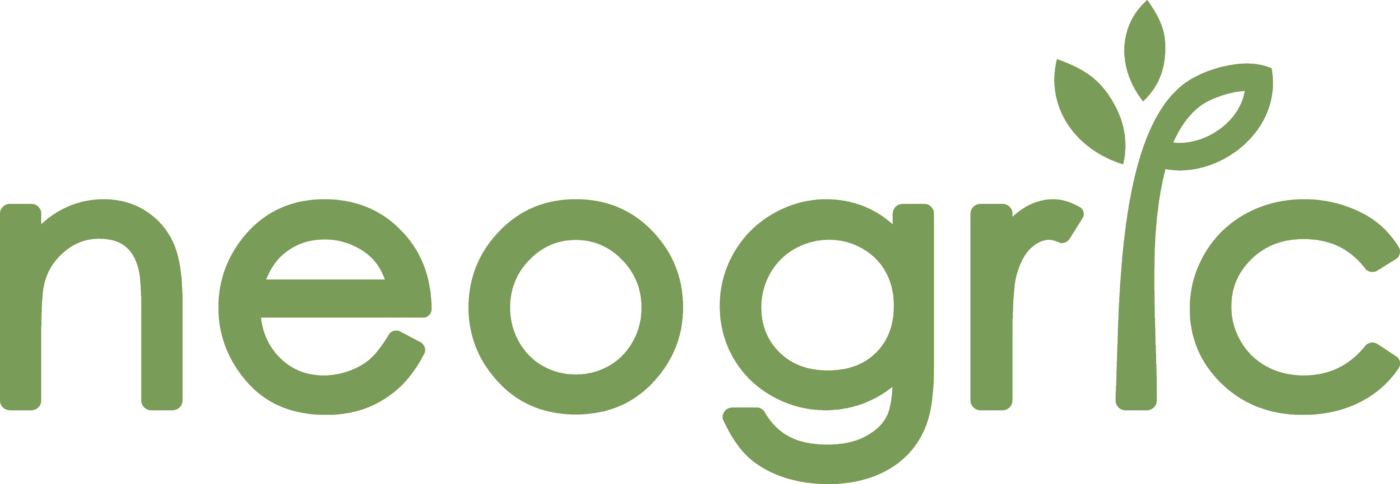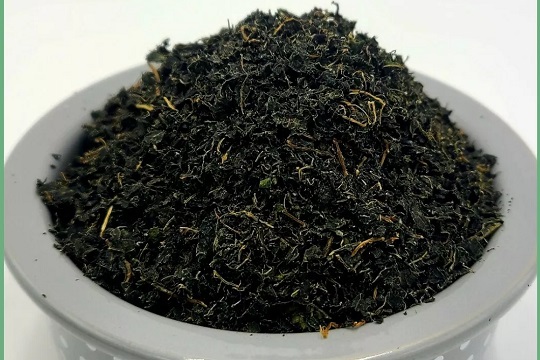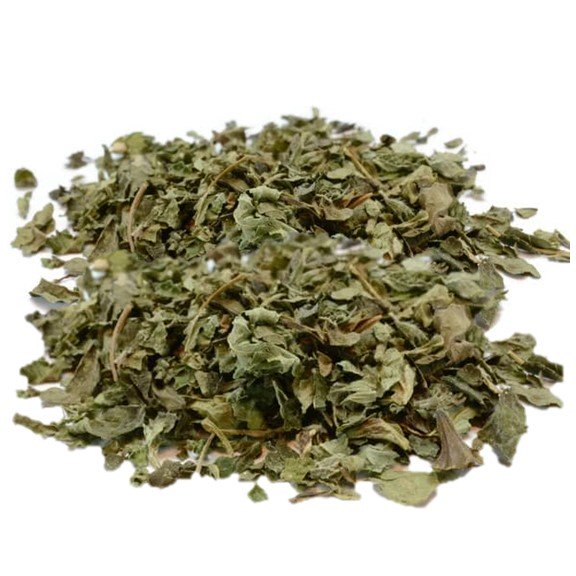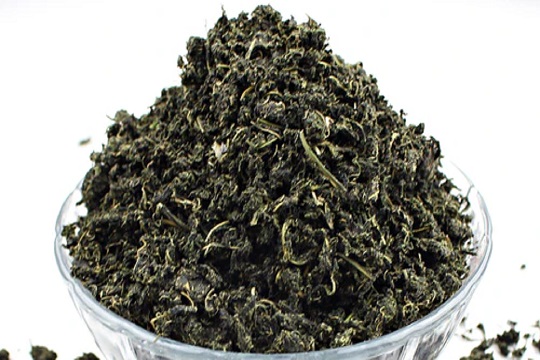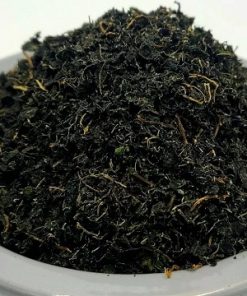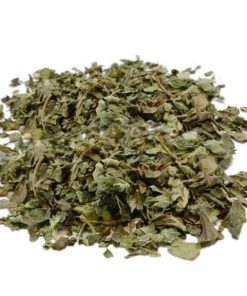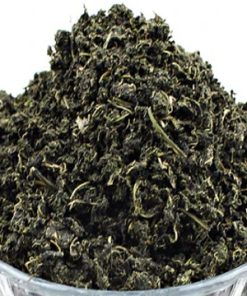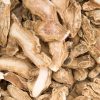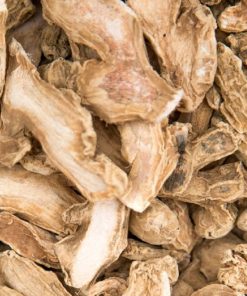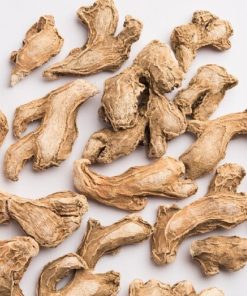What is Dried Bitter Leaf? Why Buy It?
Dried Bitter Leaf, scientifically known as Vernonia amygdalina, is a leafy green vegetable native to tropical Africa, widely revered for its distinctive bitter flavor and immense health benefits. Once harvested, the fresh bitter leaf undergoes a drying process—either sun-dried or mechanically dehydrated—to preserve its shelf life, flavor, and medicinal qualities. In its dried form, Bitter Leaf becomes a valuable commodity, both for culinary use and as a functional food in herbal medicine.
The leaf’s bitterness is due to the presence of various phytochemicals, including alkaloids, flavonoids, saponins, and tannins. These compounds make Dried Bitter Leaf a potent antioxidant and antimicrobial agent. When properly rehydrated, Dried Bitter Leaf retains much of its original nutritional and medicinal value, making it a sought-after product in global markets, especially among African diaspora communities, herbal remedy manufacturers, and health-conscious consumers.
Dried Bitter Leaf is a powerhouse of nutrients. It contains essential vitamins such as A, C, and E, along with minerals like calcium, iron, potassium, and zinc. It is commonly used in traditional medicine to manage and prevent conditions such as diabetes, malaria, hypertension, gastrointestinal disorders, and certain infections.
Drying the leaf enhances its shelf stability, making it suitable for international export and long-term storage without preservatives. It is easy to transport and can be used year-round, even outside the harvest season.
In many West African countries, Dried Bitter Leaf is a cornerstone of traditional soups like Ofe Onugbu (Nigeria), Ndolé (Cameroon), and other ethnic stews. Its complex flavor profile—ranging from intensely bitter to subtly earthy after proper washing—adds depth to a variety of dishes.
With increasing interest in traditional medicine and African cuisine, Dried Bitter Leaf is gaining popularity in Europe, North America, and Asia. Health-conscious consumers are seeking plant-based alternatives for disease prevention, while chefs are exploring its use in fusion recipes.
For farmers and agribusinesses in Africa, Dried Bitter Leaf presents a profitable avenue. Low input costs, ease of cultivation, and multiple harvests annually make it an attractive crop for both smallholders and commercial producers.
Applications/Uses of Dried Bitter Leaf
Dried Bitter Leaf serves multiple functions across culinary, medicinal, and industrial domains. Its unique attributes make it indispensable in African cooking, natural healing systems, and emerging wellness markets.
Culinary Uses
Traditional Soups and Stews
A staple ingredient in West African soups such as Ofe Onugbu (Nigeria), Bitter Leaf Soup (Ghana), and Ndolé (Cameroon). Used alongside proteins like goat meat, stockfish, and assorted meats to make nutrient-dense meals.
Modern Cuisine and Fusion Recipes
Incorporated into global dishes including salads, sauces, and vegetable stir-fries. Infused in sauces or chutneys for a distinctive bitter-umami balance.
Food Supplements
Ground into powder and used in health shakes, teas, or mixed with smoothies for wellness routines.
Medicinal Uses
Traditional Herbal Medicine
Used as a decoction or infusion to treat ailments such as malaria, diabetes, and typhoid fever. Acts as a natural detoxifier for the liver and kidneys.
Diabetes Management
Research supports the hypoglycemic effect of Bitter Leaf, making it a natural aid in managing blood sugar levels.
Anti-inflammatory and Antimicrobial Agent
Utilized in herbal remedies to combat bacterial and fungal infections, support immune function, and reduce inflammation.
Antioxidant Support
Rich in polyphenols that scavenge free radicals, making it useful for anti-aging and cardiovascular protection.
Personal Care and Cosmetics
Skincare Products
Extracts used in organic skincare formulations for acne treatment and skin toning.
Hair Care
Traditional rinses made from Bitter Leaf are used to strengthen hair and reduce dandruff.
Agricultural and Industrial Uses
Organic Pesticide
Acts as a natural pesticide when used in organic farming systems to deter pests and enhance soil fertility.
Herbal Tea Production
Processed into Dried Bitter Leaf tea bags for export to wellness markets in Europe and North America.
Top Producing/Exporting Countries of Dried Bitter Leaf
Dried Bitter Leaf production is primarily centered in West and Central Africa, where the crop is both culturally significant and economically viable. Key producers and exporters include:
Nigeria
Leading Global Producer and Exporter. Nigeria is the largest producer of Bitter Leaf globally, particularly in the southeastern and middle-belt regions. Commercial production is supported by an extensive local demand and a growing export sector catering to African communities abroad.
Cameroon
Known for its indigenous Ndolé variety, Cameroon produces and exports high-quality Bitter Leaf, especially to France, Belgium, and Canada. Exporters often sun-dry or mechanically dry the leaves before packaging for international shipment.
Ghana
Ghanaian Bitter Leaf is cultivated in large quantities and exported mainly to the United Kingdom, the Netherlands, and the U.S. Small-scale cooperatives and agribusinesses are increasing capacity to meet export demand.
Uganda
Emerging producer in East Africa, Uganda exports Dried Bitter Leaf mainly to North America and Europe. The crop is part of the government’s strategy to promote high-value agricultural exports.
Kenya
Focused more on regional trade, Kenya’s export of Dried Bitter Leaf is steadily increasing through e-commerce and niche health product markets.
Benin and Togo
Smaller but growing exporters with access to European markets through local cooperatives and bulk trade routes.
Top Importing Countries of Dried Bitter Leaf
The demand for Dried Bitter Leaf is rapidly expanding beyond traditional African markets. Major importing countries include:
United States
One of the largest importers, particularly through African grocery stores, herbal product companies, and online platforms. Used both for culinary purposes and in dietary supplements, teas, and herbal remedies.
United Kingdom
Home to a large West African diaspora, the UK imports substantial quantities of Dried Bitter Leaf for ethnic markets, restaurants, and herbal shops.
Canada
Canadian cities with sizable Nigerian, Ghanaian, and Cameroonian populations import the product primarily for ethnic cuisine and herbal medicine.
Germany
Growing interest in African superfoods has fueled demand in Germany, especially among natural health product retailers.
France
Cameroon’s historical ties with France support steady exports of Bitter Leaf to French herbal and gourmet food markets.
Netherlands and Belgium
Serve as distribution hubs in Europe for African imports, including Dried Bitter Leaf, which is repackaged and distributed across the EU.
South Africa
Regional demand from West African immigrants and interest in traditional herbal medicine drive Bitter Leaf imports.
Australia
Imports are on the rise among African immigrants and health food enthusiasts exploring natural detox and wellness herbs.
International Price of Dried Bitter Leaf Per KG
The unit price ($ per KG) of Dried Bitter Leaf in the international market depends on a host of different factors including:
- The grade of the produce (usually the more the processing, the higher the price)
- The price of the raw material
- Age of the seeds (this can affect the price)
- Production levels in producing countries
- Economic conditions and the exchange rates between the currencies of the producing and importing countries.
- The quantity ordered (the greater the quantity, the cheaper you can get it per ton)
- Harvest season (it is more costly when it is out of harvest season).
- Weather conditions (some commodities are sensitive to weather conditions).
- Freight & haulage cost
- Percentage of markup
- Import duties, trade tariffs and trade agreements between countries
- Distance from the country of origin
- Technology/Infrastructure available in country of origin
- Relationship between the buyer and seller
That said, as at March 2025, Dried Bitter Leaf costs between $8 and $14 Per KG in the international market.
How To Safely Source for Your Dried Bitter Leaf Produce
If you find the right export company, buying directly from them can make the purchase process easy and stress-free, when compared with doing the sourcing on your own. That said, there are few things to note when dealing with an export company in Nigeria or Africa. The specific requirements for Nigeria are listed below, but they mostly apply to other African countries:
- The exporting company must be registered with the Corporate Affairs Commission (CAC) to make sure the company is registered and permitted to carry out business
- The export company must also be registered with the Nigerian Export Promotion Council (NEPC).
- The company must possess a domiciliary account to accept international
The company should get all necessary export-related documentation done before the shipment leaves the port of origin. Some of the documents are:
- Certificate of origin
- Bill of lading
- Inspection Certificate (SGS, Cotecna, Bureau Veritas, Intertek, etc)
- Phytosanitary certificate
- Fumigation certificate
Where To Find Reliable Exporters
An important question that still needs to be answered is how to find Dried Bitter Leaf exporters in Nigeria. You can use any of the methods listed below:
- Attend trade fairs
- Use search engines like Google, Yahoo,
- Search for agents on Linkedln
- Sign up on trade platforms (e.g. Alibaba, Tradeford, Go4WorldBusiness)
- Neogric – Neogric is one of the reliable Dried Bitter Leaf exporters in Neogric is rated among the best in the exporting business in Nigeria. The company is not limited to the exportation of Dried Bitter Leaf alone but can export other agricultural produce ranging from perishables to dry seeds.
How To Pay For Your Dried Bitter Leaf Produce
You can pay for Dried Bitter Leaf using different methods, but three of the popular ways of paying for your agric produce are:
- Bank (T/T) Payment
- Advance Payment
- Letter of Credit (LC)
Bank Payment (T/T)
Bank payment is also known as T/T, “Telegraphic Transfer” or “Telex Transfer” In other words, it is an international wire of funds from the buyer’s bank to the seller’s bank.
A T/T is technically not the same as a wire transfer, which is often done through the SWIFT network. However, when a seller or supplier asks for a T/T payment, a wire transfer is what they are really asking for.
The wire transfer based on the SWIFT system is the most common payment method in international trade. Typically, it takes 1-5 working days to clear, and generally costs between 25 and 50 USD, depending on your agreement with the commercial department in your bank.
Advance Payment
There are sellers that will demand anywhere from 30% to 50% advance payment, and for good reason. If both parties have done deals in the past, sellers can ask for a percentage of the sales (about 30%) before they ship the produce and they can request for the remaining amount after a scanned copy of the Bill of Lading has been sent to the buyer.
It is the safest option for exporters and it also guarantees that they will have some funds to help with sourcing. It is popular among manufacturers on B2B marketplaces like Alibaba and also with commodity traders.
However, advance payment carries considerable risk for the importer (buyer) because the exporter (seller) might not be under as much pressure to ensure quality checks compared with a stricter form of payment. Some might even disappear entirely.
Having said that, advance payment is very useful and is widely used. For instance, the seller might need to secure the commodity in the face of increased competition. It can also be used when the exporter needs some money for sourcing the produce or for processing raw materials.
The most important thing is for both importer and exporter to build mutual trust by having a track record of successful deals with each other or other known companies.
Letter of Credit
Letter of Credit is an agreement generated by the bank of the buyer, guaranteeing payment once certain conditions are met. It is one of the safest types of payment available to both buyer and seller.
Some of the types of Letter of credit are:
- Commercial Letter of Credit,
- Sight Letter of Credit
- Transferrable or Non-Transferable Letter of Credit
- Standby Letter of Credit (SBLC)
- Usance or Deferred Payment Letter of Credit
- Revocable or Irrevocable Letter of Credit
- Confirmed or Unconfirmed Letter of Credit
- Revolving Letter of Credit
- Green Clause Letter of Credit
- Red Clause Letter of Credit
L/Cs are not totally safe (for either buyer or seller) too. For instance, sellers can ship substandard products or those that are different from the ones agreed upon. In this case, the seller gets paid and the buyer receives goods he cannot use.
And speaking of the dangers of L/Cs for the exporter, the conditions in the Letter of credit might be practically impossible to fulfil; if an exporter agrees to such, he might be unable to receive payment. A report stated that of the letters of credit received in the UK, 50% are unworkable while 70% are rejected by the banks for payment.
Shipping & Delivery Terms
When shipping your products, it is important to take note of a few factors:
Order Quantity
For smaller shipments, airfreight is often the preferred option but as the order volume increases, sea freight could become significantly cheaper. Usually when the order is close to a full container load (20 ft), sea freight is used. Although the Covid-19 pandemic caused an increase in cost of delivery of products, prices have stabilised.
Cost of Delivery
When the order is of a large volume, sea freight often turns out cheaper than air freight. In fact, air freight could be up to 6 times more costly than sea freight if the volume is large enough.
Time of Delivery
Sometimes, time will be more important to the buyer than the cost of delivering the product. In this case, air freight will be the logical option (as stated above, the cost will be more). But if you have more time as a buyer, you should strongly consider using sea freight.
Incoterms
Incoterms refer to generally accepted shipping and payments terms. For example, buyers that have representatives in the source country or that can negotiate with the freight company can use the Free of Board (FOB) terms, since it gives them more control and can save them some money.
However, if the shipment is small or the buyer doesn’t have an extensive network to effectively handle payment for freight, insurance and port charges, he will be better off choosing the Cost-Insurance-Freight (CIF) payment option.
Neogric: Top Exporters and Suppliers of Dried Bitter Leaf
We invite you to place your order for high-quality Dried Bitter Leaf with us at Neogric. We are a trusted global commodity sourcing and trade solution provider with deep expertise in the Dried Bitter Leaf industry. Whether you’re a small business or a large corporation, our wide range of products and technology powered, end-to-end supply chain make the export of quality Dried Bitter Leaf easy, quick and safe. Whichever region of the world you are, be it Europe, Asia, USA, Canada, Other North/Central American countries, Africa, South America or Oceania, you can reliably order your agricultural produce and we will ensure it is successfully delivered to you, on time.
Why Buy Dried Bitter Leaf From Neogric?
Choosing Neogric as your Dried Bitter Leaf supplier offers several advantages:
- Quality Assurance: We maintain strict quality control standards, ensuring our Dried Bitter Leaf and other products are of the highest quality.
- Wide Product Range: We offer a diverse selection of products, catering to various
- Reliable Supply Chain: Our efficient technology-powered end-to-end supply chain ensures timely delivery of your orders.
- Expertise and Support: Our team of experts provides valuable insights and support, making your purchasing process smooth and hassle-free.
Our Dried Bitter Leaf Trade Specifications
- Origin: Nigeria
- Product Name: Dried Bitter Leaf
- Physical Specification: Based On Buyer’s Specification
- Quantity: Based On Buyer’s Specification
- MOQ: 10 Metric Tonnes
- Trade Process: Ex Works/FOB/CIF
- Admixture/Impurities: Based On Buyer’s Specification
- Inspection: SGS/Cotecna/Intertek/Bureau Veritas
- Packaging: Based On Buyer’s Specification
- Payment Method: TT (Bank Transfer) or L/C
- Shipping Time: 15 to 25 Days After Confirmation of TT or L/C
- Loading Port: Lagos (Nigeria), Abidjan (Cote D’ivoire) or Tema (Ghana)
Expected Shipping Documents
- Bill of Lading
- Certificate of Origin
- SGS Inspection Certificate
- Phytosanitary Certificate
- Fumigation Certificate
- Commercial Invoice
- Packing List
Place Your Dried Bitter Leaf Order With Neogric
Contact us today to place your order for high-quality Dried Bitter Leaf. Our team is ready to assist you with all your procurement needs.
- Tel: +2348147860157
- Email: neo@neogric.com
- WhatsApp: Chat With Us
